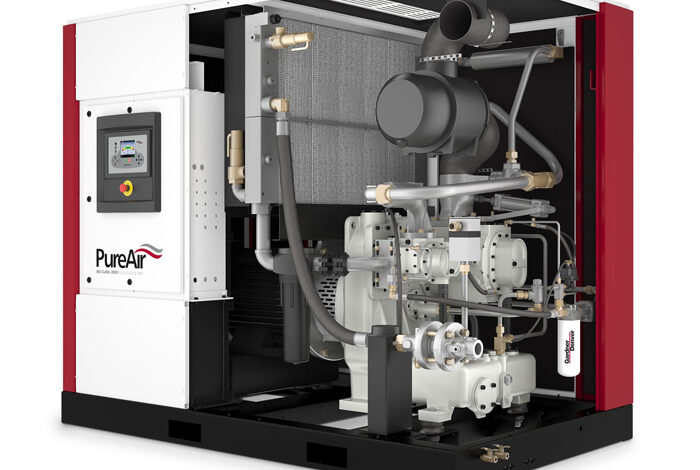A Complete Guide To Selecting Rotary Screw Air Compressors for Industrial Use

For industrial settings, picking the suitable air compressor can be as critical as ensuring a constant power supply. Rotary screw air compressors are renowned for their reliability and efficiency, making them the go-to choice in various industrial applications. These machines serve a wide range of functions, from powering heavy-duty machinery to providing controlled air in automation systems. The selection process, however, can be complex, involving a multitude of factors such as size, power, efficiency, and maintenance requirements. In this article, we delve into the vital aspects you need to consider to make an informed decision for your industrial needs.
Understanding Rotary Screw Air Compressors and Their Industrial Applications
The core of a rotary screw air compressor lies in its ability to generate compressed air. This is achieved through the continuous rotation of helical screws, which efficiently compress incoming air before it’s delivered to various tools and processes. These units are known for their durability and are particularly suited for continuous, demanding applications that require a stable air supply. Understandably, industries ranging from automotive to pharmaceutical extensively utilize these compressors for their operations.
One of the primary advantages of using rotary screw technology is its capability for variable speed operation. This adaptability allows compressors to match output with demand, conserving energy and reducing operational costs. Furthermore, compared to other compressor types, these machines generally offer lower noise levels and vibration, which contributes to a safer and more comfortable working environment.
Throughout the industrial landscape, these compressors serve multiple roles. They are indispensable in tasks that need high-quality air, such as painting and material handling. In addition, they are also utilized in energy generation and are integral to operations in the construction sector. Given such broad applications, it’s clear that selecting the right rotary screw air compressor is critical for optimizing productivity and efficiency.
Key Factors to Consider When Choosing a Rotary Screw Air Compressor
The selection of a rotary screw air compressor should start with a thorough evaluation of the specific needs of your facility. The capacity of the compressor, which is usually measured in horsepower (HP) and cubic feet per minute (CFM), must align with your facility’s demand for compressed air. An undersized compressor can lead to insufficient air supply, while an oversized one can result in unnecessary energy consumption and increased wear.
The operating environment is another crucial consideration. Compressors intended for use in harsh conditions, such as extreme temperatures or dusty locations, require robust designs and additional protection against the elements. In addition, the quality of air needed for your operations will determine the level of air filtration and purification systems that must be integrated into your compressor setup.
Reliability and durability are also paramount. Industrial settings can be unforgiving, potentially exposing equipment to constant use and environmental stresses. Therefore, selecting a compressor with a proven track record of withstanding these rigors is vital. This not only ensures continuous operation but also mitigates the risk of costly downtime and repairs.
The Role of CFM and PSI in Selecting the Right Compressor
Cubic Feet per Minute (CFM) and Pounds per Square Inch (PSI) are two of the most critical metrics to understand when selecting an air compressor. CFM measures the volume of air that the compressor can deliver at a specific PSI level. Essentially, it indicates how much air the compressor can produce and is a direct indicator of whether the compressor can meet the air flow demands of your tools and processes.
PSI, on the other hand, refers to the pressure at which the air is delivered. Different tools and applications require different levels of pressure to operate effectively. Typically, industrial-grade tools require higher PSI levels. It’s important to know the maximum PSI requirements for your applications to ensure the compressor can deliver the necessary pressure without overstraining the system.
A mismatch in CFM and PSI can lead to inefficiencies or even render equipment inoperative. It’s important to calculate the combined CFM requirements of all tools that will be used simultaneously to ensure the chosen compressor exceeds those demands. Additionally, while many compressors can be set to operate at various PSI levels, optimizing the pressure settings can lead to better energy usage and longevity of both the equipment and the compressor.
Selecting the ideal rotary screw air compressor for industrial use requires a comprehensive assessment of your specific needs, the available options, and the long-term implications of your choice. By taking into account the tips and considerations outlined above, you can enhance operational efficiency and safeguard your investment for years to come.




